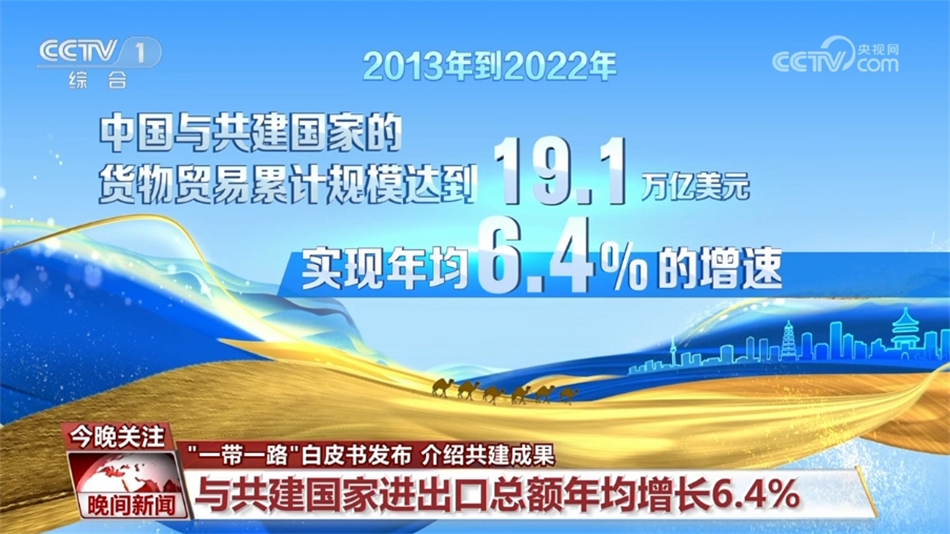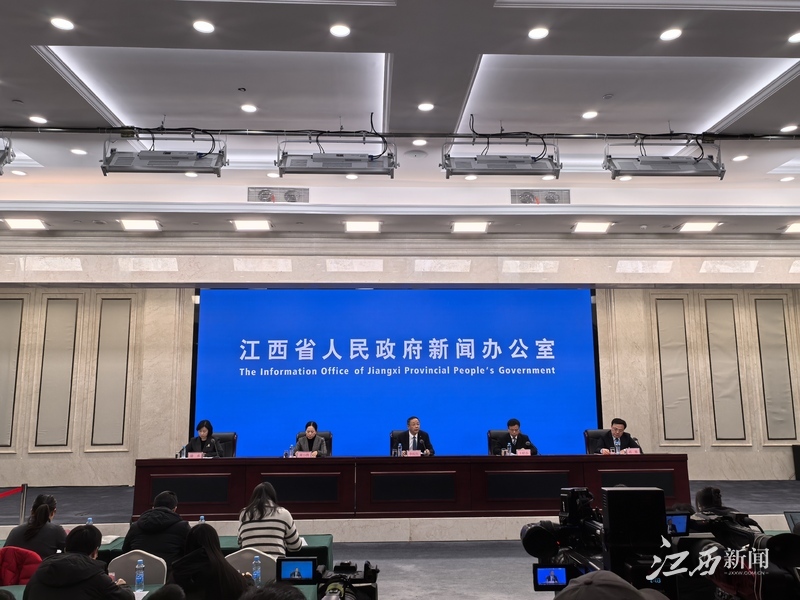"Belt And Road": Not A Private Path, But An Open Path
"Belt And Road": Not A Private Path, But An Open Path
On the morning of November 3, foreign guests who participated in the second "Understanding China" International Conference exchanged on the tea break full of Chinese characteristics. Photo by Li Junhui of this newspaper/Photo by this newspaper, is it possible to form a large pattern of open cooperation throughout the Asia, Europe and Africa in the next few decades?
On the morning of November 3, foreign guests who participated in the second "Understanding China" International Conference exchanged on the tea break full of Chinese characteristics. Photo by Li Junhui of this newspaper
In the next few decades, is it possible to form a large pattern of open cooperation throughout the Asia, Europe and Africa?
Zhang Yansheng, who just returned from a business trip from Washington, USA a few days ago, has been thinking about this issue. Zhang Yansheng is the director of the Institute of Foreign Economics of the National Development and Reform Commission. The open cooperation pattern he is thinking about is the "Belt and Road" strategy initiated by national leaders two years ago.
The "Belt and Road" strategy is the abbreviation of the Silk Road Economic Belt and the 21st Century Maritime Silk Road. This is a strategy that sounds quite literary and artistic. Through this strategy, multiple countries will be connected more effectively.
At the second "Understanding China" International Conference, the topic of "Belt and Road" attracted the attention of many foreign guests. In their opinion, this is a major strategy for future openness and development.
China wants to inspire development
"In Pakistan, every region raises his hands and says, Sorry, I want this road to pass through our region," said former Pakistani Prime Minister Shawkat Aziz, who described the popularity of the Belt and Road strategy in Pakistan.
What Shawkater Aziz sees is the huge economic effect that the Belt and Road Initiative can produce. "This can improve Pakistan's infrastructure construction, open up channels for trade and tourism, and prosper the economy," he said.
In 2013, Chinese President Xi Jinping put forward the strategic concept of the "Belt and Road". This is a big strategy that covers more than half of the world's population. Preliminary estimates are that the total population along the "Belt and Road" is about 4.4 billion, and the total economic output is about 21 trillion US dollars, accounting for about 63% and 29% of the world respectively.
At the second "Understanding China" International Conference, former Singapore Foreign Minister Yang Rongwen was the chairman of one of the forums. He believes that the "Belt and Road" is part of China's plan.
"This time, China wants to be ahead of the West. China's economic power is strong and we must stimulate development in Central and South Asia." Yang Rongwen said that connectivity is an important part of the "Belt and Road". In the end, the country will achieve connectivity not through force, but through subtle influence. This is not a move that China shows power, but a necessary task.
Yang Rongwen likes to look back at history: "In Asia, since the Qing Dynasty, the big brother who has been friendly with everyone and brings wealth to everyone has always been China."
This strategy has begun to be gradually promoted. One detail Yang Rongwen noticed was that in Pakistan, the waiters in the hotel speak Chinese.
If you open the map, you will find that the "Belt and Road" strategy connects not only Asian countries in Central and South China, but also various possibilities for cooperative development between multiple countries around the world.
Foreign merchants often ask Zhang Yansheng: Why is there no region where I am located in the "Belt and Road"?
Zhang Yansheng's answer is: No matter which country, as long as it has the willingness to cooperate, it can become a part of the "Belt and Road". This is an open system that welcomes all countries and regions in the world to participate and join.
There are nervousness, but more welcome
"Consulting, co-constructing, sharing." The word "common" has made the "Belt and Road" strategy more and more popular.
Former Russian Deputy Prime Minister Soskowitz said that the "Belt and Road" strategy is related to the cooperation between China and neighboring countries, and this concept of cooperation has been highly praised by many countries.
Wu Jianmin, former Chinese ambassador to France, is more willing to understand the "Belt and Road" from an economic perspective. In his opinion, the Belt and Road Initiative solves the problem of insufficient global demand. Through the "Belt and Road", countries form complementarity and share the dividends of development.
Real money has been taken out. China invested $40 billion to establish the Silk Road Fund, which has been successfully launched; China advocated the establishment of a US$100 billion Asian Infrastructure Investment Bank, which has also been officially established.
Strategic planning is moving forward step by step.
At the second "Understanding China" International Conference, representatives from South Korea took the initiative to mention the "Belt and Road". What he was concerned about is whether China's domestic reforms would be combined with the promotion of the "Belt and Road". "We hope this strategy can be more closely linked to South Korea," he said.
The South Korean representative has answers to the questions that concern him.
Zhu Guangyao, Vice Minister of Finance of China, said at the second "Understanding China" International Conference that the "Belt and Road" strategy has been written into the 13th Five-Year Plan.
"I think the opening-up strategy in the 13th Five-Year Plan is the 'Belt and Road'." Xue Li, director of the International Strategy Research Office of the Institute of Social Economics and Politics of the Chinese Academy of Social Sciences, said in an interview with China Youth Daily that an important adjustment in the new five-year plan is neighborhood diplomacy.
In his opinion, the "Belt and Road" is the top-level design of foreign relations planned by the new Chinese government. "Internal, we have the Yangtze River Economic Belt strategy and the coordinated development strategy of Beijing, Tianjin and Hebei; externally, it is the "Belt and Road" strategy."
"It can be said that the 'Belt and Road' strategy is that China is in the 'opening' surrounding area. In other words, it means going out." Xue Li said that the point that the "Belt and Road" emphasizes is to connect with the development strategies of neighboring countries.
This means that if China wants to go global to "open" its surroundings, it needs to create a stable surrounding environment. As the surrounding economy develops, the market will expand and production capacity will increase.
"What China emphasized in this process is that neighboring countries should be willing to cooperate." Xue Li said that some countries have many concerns, and if they do not participate, China is not in a hurry. Some countries are very welcome, so cooperation is easy to develop quickly. This will not create tension in other countries about "openness" with China. I didn't say "open" you, I just wanted to drive the development of the surrounding areas. “It’s out of our needs and it’s our responsibility.”
If we look at it from a longer timeline, China's "going out" in the past few decades has encouraged enterprises and individuals to go out, and now, "going out" is a national strategy.
Careful people will find that Chinese national leaders are increasingly promoting China, high-speed rail, daily consumer goods, nuclear power plants, etc.
However, such a strategy has also made some countries have doubts. At the second "Understanding China" International Conference, a representative from India said that although India is very active in this "Belt and Road" strategy, it would like to remind Chinese friends to always be vigilant against hegemony.
Against the background of globalization, China's "height" has grown taller. "We used to want to hide our strength and keep a low profile. We wanted to hide behind big trees, but now we can't hide it." Xue Li said that in the past, no one cares about China's anything, but now others are looking at it with magnifying glasses. China needs to adjust its external strategy and directly tell others what we want to do.
Strategic implementation needs to be refined
In the eyes of many people, the "Belt and Road" is a large market with unlimited potential.
Former Russian Vice Premier Soskowitz told China Youth Daily that China and Russia need to deepen their trade cooperation, especially in China's southwest and southern regions, there is less cooperation with Russia. "Chengdu has only opened direct flights with Russia this year, and companies from both countries have just had the opportunity to exchange business cards."
"The Belt and Road Initiative is written into the 13th Five-Year Plan, which is the first time that China's economic planning is closely linked with global strategy." Zhu Guangyao, deputy minister of the Ministry of Finance of China, said that the "Belt and Road Initiative" is a bridge connecting the 13th Five-Year Plan with the world. This strategy has considerations of the world and a comprehensive judgment of China's national conditions.
For the world, this is sending an important signal: China's domestic economic planning has been linked to global development.
Just recently, when Chinese President Xi Jinping visited the UK, the UK took the initiative to connect the northern England revitalization plan with the "Belt and Road" strategy. And Britain is not a country on the ancient Silk Road, nor is it a country along the "Belt and Road".
In Zhu Guangyao's view, in today's economic globalization, countries around the world urgently need to cooperate with each other.
Zhang Yansheng is often asked about the "Belt and Road Initiative", such as is this a green road or an inclusive road? Will this become a burden for China? Zhang Yansheng's answer is: There are both opportunities and risks.
Xue Li pays more attention to the implementation of the "Belt and Road" strategy. In his opinion, the stage that emphasizes the importance of the "Belt and Road" strategy has passed, and the key is how to solve and implement some specific issues in the implementation of the "Belt and Road" strategy.
Xue Li told that there are 14 countries and regions around China and 64 countries along the Belt and Road Initiative, and key countries and key areas need to be identified. The premise of this "confirmation" is that someone has to do a lot of research, so that countries along the route can tell us what we want to do, and we can make an audit mechanism ourselves, and then do it.
"We still have some shortcomings in this regard." Xue Li said that it is necessary to sort out the implementation of the "Belt and Road" strategy, which issues should be done first and which issues should be done later.
"This is an open strategy, not someone's private path, but a shared avenue for everyone." Zhu Guangyao said.





